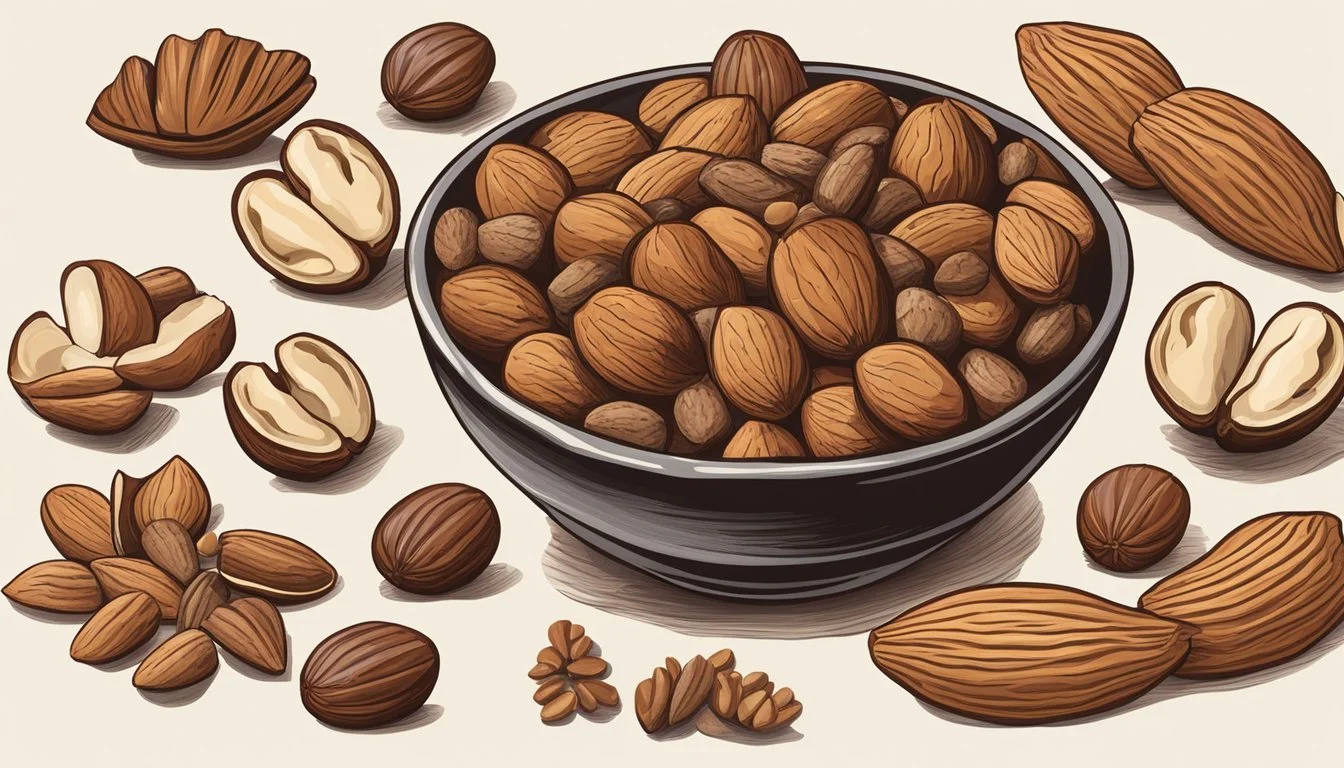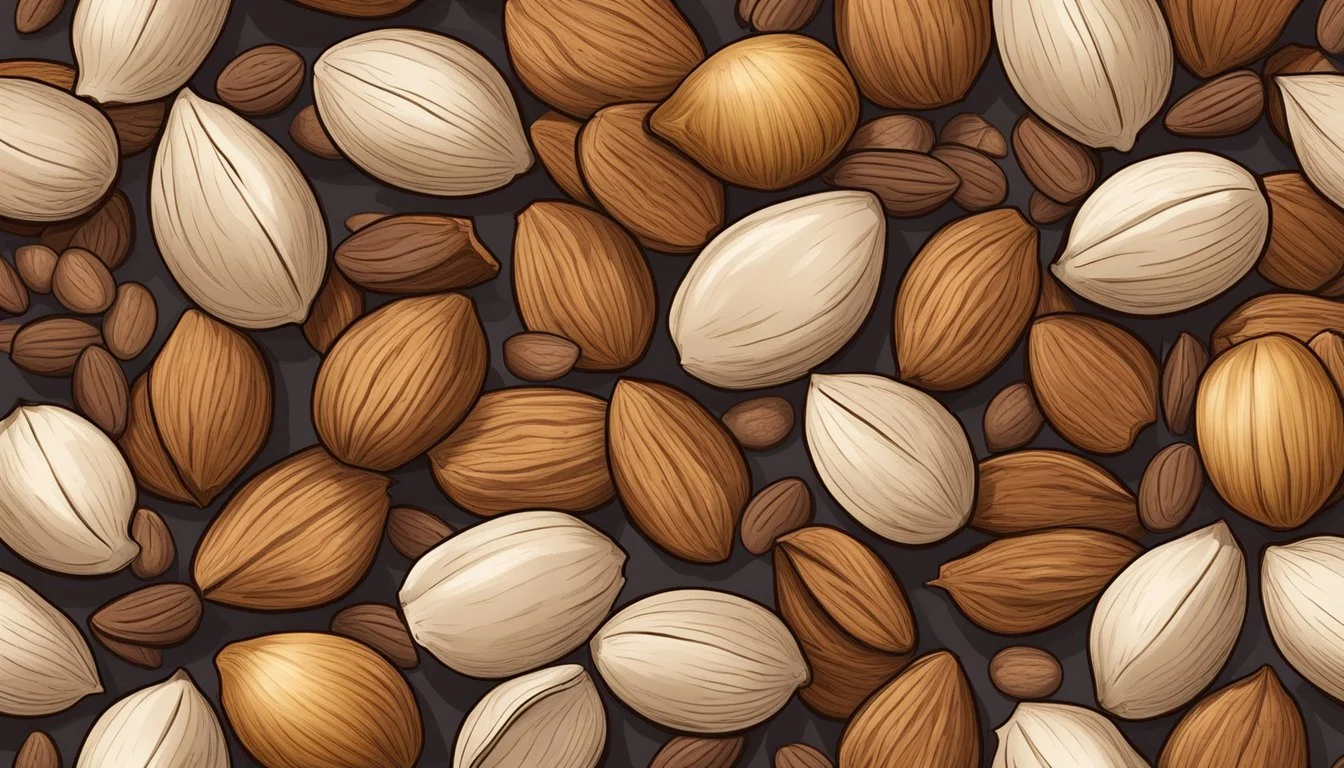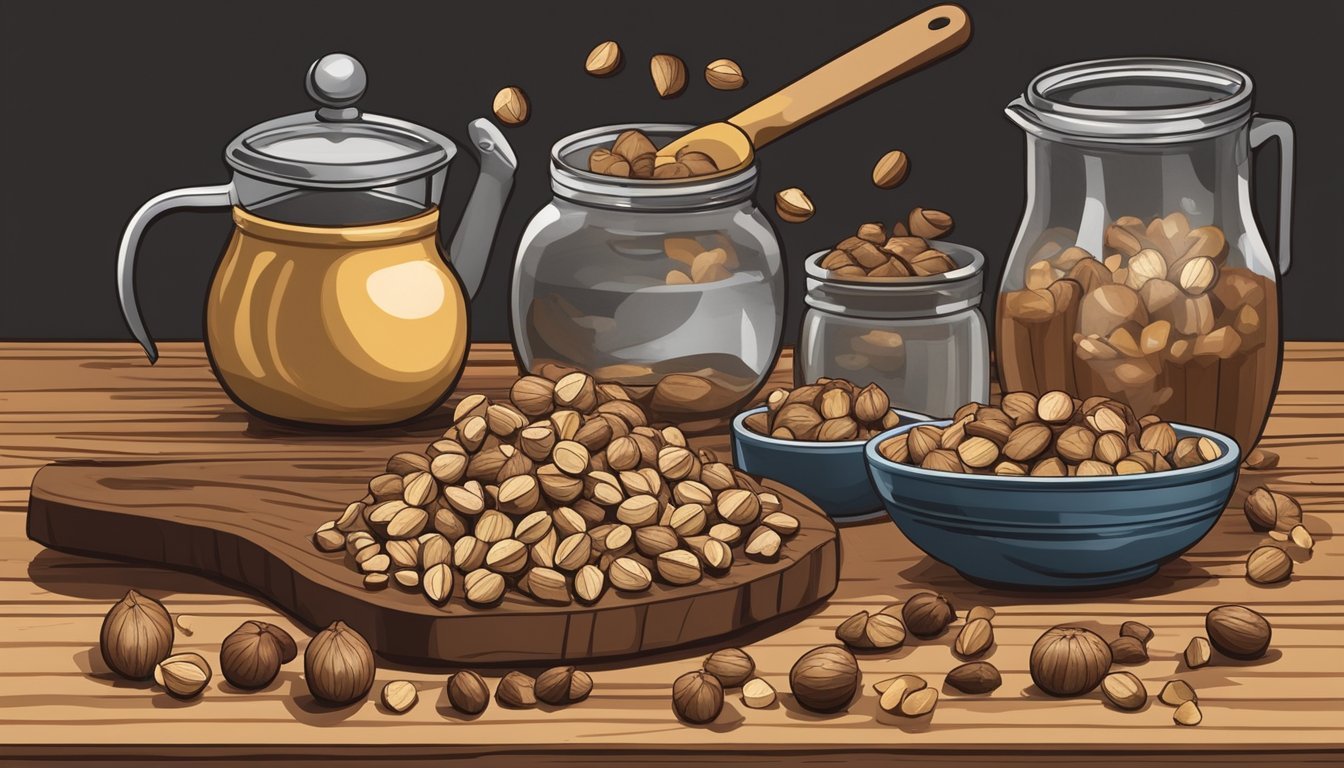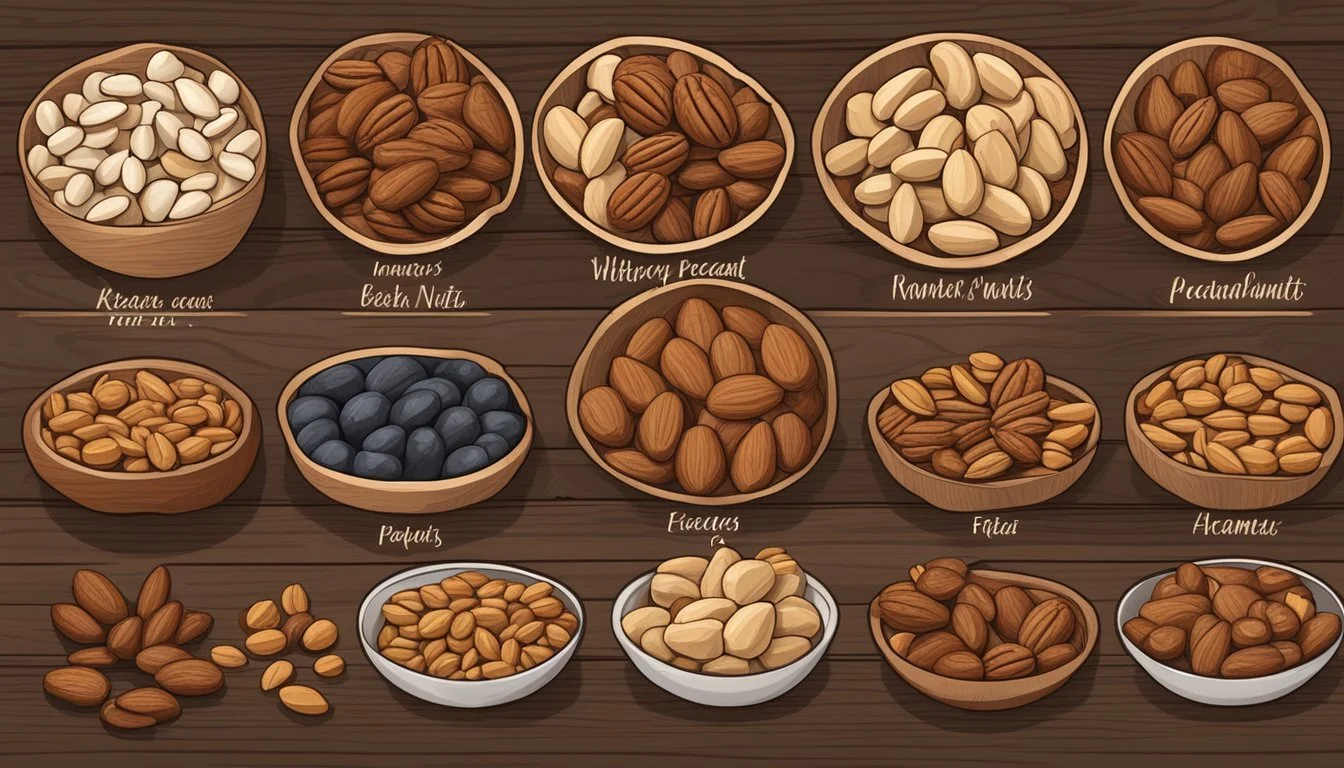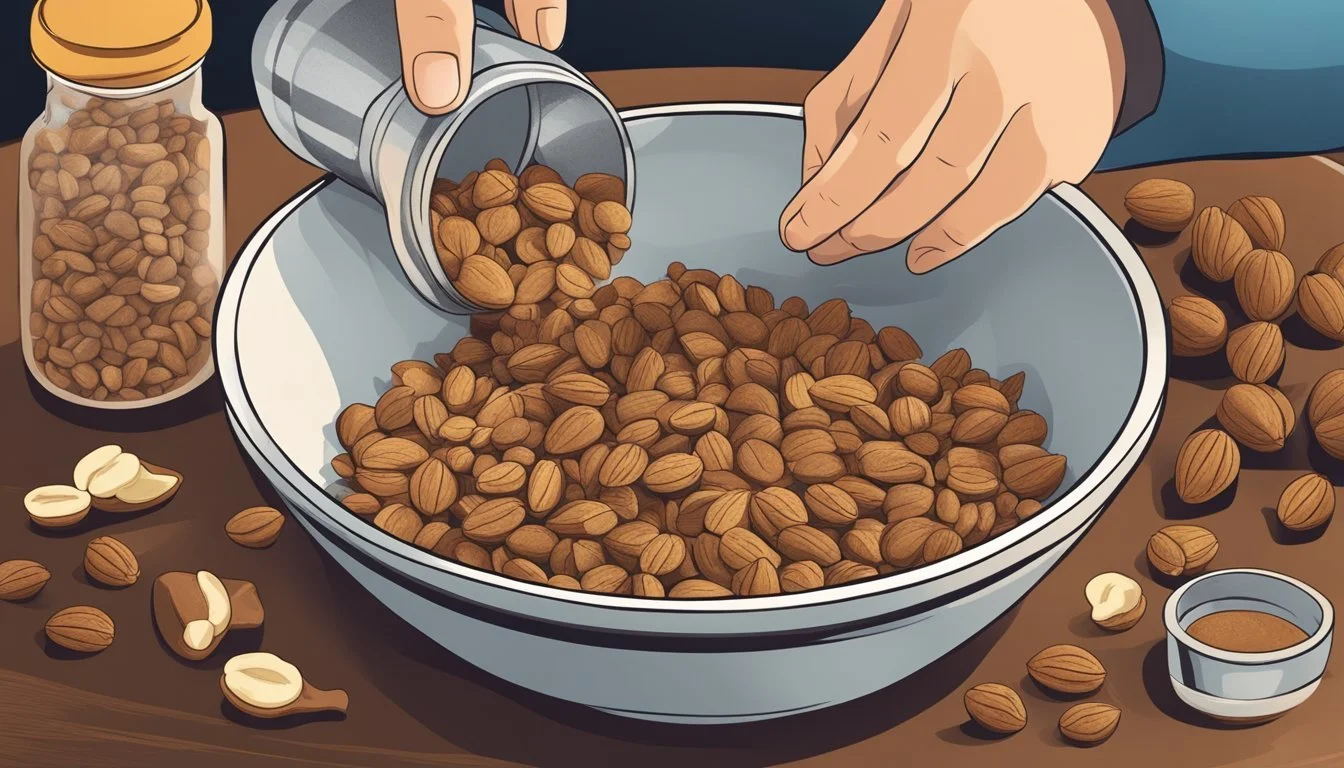Hickory Nut Substitutes
Top Alternatives for Your Recipes
Hickory nuts, with their rich, buttery flavor, are native to North America and hold a cherished spot in many culinary traditions. Due to their somewhat sweet taste and crunchy texture, they are a prized ingredient in various dishes, from baked goods to savory applications. However, their accessibility can be limited depending on the season or region, prompting the need for suitable substitutes that can mimic their unique characteristics in recipes.
When searching for alternatives, it is important to consider the textural and flavor profiles of the substitute in relation to hickory nuts. Substitutes should not only complement the other ingredients but also offer a similar mouthfeel. Ingredients such as walnuts are often recommended due to their close relation and similar taste to hickory nuts. Other options include seeds like pumpkin and sunflower, which can provide a nut-free crunch in baked items like muffins, or crisp rice cereal for a different texture. Each alternative brings its own qualities to a recipe, and the choice of substitute may depend on the intended outcome of the dish.
Understanding Hickory Nuts
Hickory nuts are the fruit of trees belonging to the Carya genus, valued for their robust flavor and nutritional qualities. This section discusses the various hickory tree species, characteristics of their nuts, and the health benefits these nuts offer.
The Hickory Tree Species
The genus Carya, part of the family Juglandaceae, encompasses a variety of hickory tree species. These include the pecan (Carya illinoinensis), shagbark hickory (Carya ovata), shellbark hickory (Carya laciniosa), and bitternut hickory (Carya cordiformis). Each of these species produces nuts distinctive in flavor and appearance, making them sought after for culinary and nutritional purposes.
Characteristics of Hickory Nuts
Hickory nuts are encased in a hard shell with a fibrous husk that splits open when the nuts are mature. They are typically oval to oblong in shape, and sizes range from 0.5 to over 2.5 inches depending on the species. For example, pecan nuts are identified by their elongated shape and smooth shell, while shagbark and shellbark hickory nuts are known for their larger size and distinctively shaggy husks.
Shape: Generally oval to oblong
Size: From 0.5 inch to over 2.5 inches
Shell: Hard, encased in a fibrous husk
Nutritional Value and Health Benefits
Hickory nuts are rich in nutrients, boasting a high content of fats, proteins, and various minerals. Pecans, a type of hickory nut, are particularly noted for their health benefits, including a high dose of antioxidants and essential fatty acids. Regular consumption of hickory nuts, like other nuts in the Juglandaceae family, may contribute to heart health and help in managing weight.
Fats: High in monounsaturated and polyunsaturated fats
Proteins: A good plant-based source
Minerals: Contains magnesium, potassium, and calcium
In short, hickory nuts, as part of a balanced diet, can offer a combination of taste and nutrition that is hard to match by many other natural food sources.
Culinary Uses for Hickory Nuts
Hickory nuts are prized for their rich flavor and versatility in cooking. They are a traditional food source that can enhance both sweet and savory dishes, making them a favored ingredient in various recipes.
Traditional Hickory Nut Recipes
In traditional cooking, hickory nuts have a time-honored place. They're often showcased in recipes where their unique taste can truly shine.
Baked Goods: Hickory nuts can be added to baked goods such as breads, cookies, and muffins, imparting a distinct, nutty flavor.
Desserts: Classic desserts like pies and cobblers gain depth and texture with the addition of hickory nuts.
Oatmeal: Stirring these nuts into oatmeal enriches breakfast with a satisfying crunch and a boost of flavor.
Granola: Homemade granola benefits from hickory nuts for added flavor and nutritional value.
These nuts can also be ground into a meal and used as a thickening agent for stews and sauces, contributing both substance and taste to heartier dishes.
Incorporating Hickory Nuts in Modern Dishes
Chefs and home cooks have found creative ways to incorporate hickory nuts into contemporary cuisine. They present a strong flavor profile that can transform a dish.
Sauces: Finely chopped hickory nuts can be whisked into sauces to add texture and a nutty undertone.
Salads: Adding toasted hickory nuts to salads introduces an element of crunch, as well as a burst of flavor.
Garnishes: Sprinkled atop dishes, hickory nuts can serve as both a garnish and a flavor enhancer.
By integrating hickory nuts into modern recipes, cooks can explore new dimensions of taste and provide a nod to the culinary traditions that have long celebrated this native North American nut.
Identifying and Harvesting Hickory Nuts
Before delving into the flavorful world of hickory nuts, one must be adept at identifying the trees and their nuts, as well as understand the best practices for harvesting and storing them to ensure freshness and longevity.
Identifying Hickory Trees and Nuts
Hickory trees belong to the genus Carya, which is part of the walnut family and are easily identified by their distinctive compound leaves and shaggy bark. These deciduous trees bear leaves that usually comprise five to nine leaflets and produce fruit in the form of a nut with a hard outer shell. When identifying hickory nuts, look for a husk that transitions from green to a golden-brown as it matures.
Bark: Shaggy or ridged, varying by species.
Leaves: Compound, with five to nine leaflets.
Hickory Nut features:
Pecan (Carya illinoinensis): Oval to oblong greenish-gold husk, maturing to coppery brown, 1"-2.2" long.
Shagbark (Carya ovata): Outer husk that peels away in a distinct shaggy manner when dry.
Pignut (Carya glabra): Thin, dark brown husk with a pear-shaped shell.
Scrub Hickory (Carya floridana): Spherical nut growing in clusters, native to Florida.
Best Practices for Harvesting and Storing
When harvesting hickory nuts, timing and technique are crucial for quality. They should be collected soon after they have fallen from the tree for optimal freshness.
Collect: Pick fallen nuts or gently shake branches to loosen them.
Remove Husks: Fresh nuts should have their green husks removed upon collection.
Float Test: Submerge nuts in water; those that float are likely not viable and should be discarded.
Drying: Lay the nuts out to dry in a cool, dark place, using a fan to expedite the process.
Storage: Once completely dry, nuts can be stored in the freezer or a cool, dark location.
By following these specific steps, one ensures the preservation of hickory nuts' high-quality taste and texture for future culinary use.
Choosing the Right Hickory Nut Substitutes
When selecting a substitute for hickory nuts in cooking and baking, it's important to consider both the flavor and texture the nuts contribute, as well as safe alternatives for those with nut allergies.
Based on Flavor and Texture
Hickory nuts have a distinct taste that is similar to walnuts, with a rich, buttery essence, and a crunchy texture. For recipes that require the specific flavor of hickory nuts, walnuts or pecans are often the closest match in taste profile and can be used in equal measure.
Walnuts: They share a similar texture and are easily accessible in most stores.
Pecans: Though slightly sweeter, they complement recipes that call for hickory nuts.
If avoiding tree nuts, seeds such as pumpkin or sunflower seeds provide a crunch and can be roasted for a richer taste. Rice cereal is another option, providing a crispy texture without the nut flavor.
Nut Allergies and Alternative Options
For individuals with nut allergies, finding a substitute that does not compromise taste or texture while ensuring safety is crucial. Some non-nut options include:
Seeds: Sunflower and pumpkin seeds are great alternatives that offer a nutty flavor and can be used in similar quantities to nuts.
Dried Fruits: Chopped raisins, apricots, or figs can contribute to sweetness and texture in baked goods.
One must ensure that any alternative considered does not come into contact with other nuts during processing if cross-contamination is a concern. Always check labels for allergen information.
Preparing Nut Substitutes
When replacing hickory nuts, the preparation of substitutes is crucial to imitate the nut's unique flavor and texture. Fine-tuning roasting techniques and creating appropriate textural variations are key steps in achieving the desired result.
Roasting and Flavor Enhancement
To enhance the flavor of nut substitutes, the roasting process is essential. Nut substitutes like pecans or walnuts, which mimic the taste and texture of hickory nuts, can be roasted in a pan to bring out their natural oils and richness. Roasting should be done at a moderate temperature (around 350°F or 175°C) and watched closely to prevent burning. A light sprinkle of salt can be added after roasting to amplify the substitutes' savory notes.
Roasting Technique: Spread the substitutes in a single layer on a baking tray. Roast in a preheated oven until they're golden and fragrant.
Flavor Tip: For a deeper flavor, substitutes can also be toasted in a dry pan over medium heat, stirring frequently to ensure even browning.
Creating Textural Variations
The characteristic crunch of hickory nuts can be replicated with various substitutes to match different recipes' textural needs. Crisp rice cereal can stand in for hickory nuts to provide a similar crunch, particularly in baked goods like cookies or bars. It's advisable to start with half the amount the recipe calls for and adjust according to preference. For a softer texture reminiscent of hickory nuts, seeds such as pumpkin or sunflower can be used. They should be dried and unsalted to best mimic the hickory nut's texture.
Softer Substitutes: Pumpkin or sunflower seeds; can be left raw or lightly roasted for a softer bite.
Crunchier Alternatives: Crisp rice cereal; to be gently crushed and used as a hickory nut stand-in for extra texture.
Integrating Substitutes into Recipes
When replacing hickory nuts in recipes, chefs must consider the texture and flavor profile that the nuts contribute. Selecting the right substitute ensures the dish retains its intended characteristics.
Baking with Nut Substitutes
In baking, the role of hickory nuts may be textural or flavorful. When the recipe calls for the crunch of hickory nuts, one can opt for crisp rice cereal or crushed pretzels as they provide a similar bite. To match the unique taste, toasted seeds, such as pumpkin or sunflower seeds, are excellent because they also introduce a nutty flavor. Where nut oils are involved, one might use neutral oils like canola, with a drop of nut extract to emulate the original taste.
Nut Butters: If a recipe requires hickory nut butter, a good alternative is to use seed butters, like sunflower seed butter, which often mimic the creamy texture and rich taste.
Measurements: It is crucial to start with smaller amounts and adjust to taste:
Seeds: Use a 1:1 ratio when substituting seeds for nuts.
Cereal/Pretzels: Begin with half the called for amount and adjust for texture.
Savory Dishes and Nut Substitutes
Hickory nuts may be a key element in savory dishes, from salads to crusts. A chef might replace hickory nuts with roasted chickpeas which impart both crunch and a slightly nutty taste. In salads, roasted beans or cotija cheese crumbles add a pleasant bite. For dishes requiring the oil of hickory nuts, one may employ avocado oil or olive oil for the fat content, enhancing the meal with a rich, smooth mouthfeel without overpowering other ingredients.
Miscellaneous Uses of Hickory Nuts and Substitutes
Culinary Applications: Hickory nuts, from the genus Carya, which includes the shellbark hickory, can be used in a variety of recipes. These nuts possess a rich flavor profile that can enhance the taste of baked goods:
Substitute hickory nuts for pecans or walnuts in desserts.
Grind hickory nuts into flour for use in bread recipes.
Create hickory nut butter by blending the roasted kernels with oil and salt.
Craft and Decorative Uses: The hard shells of hickory nuts, especially those from shellbark hickory, lend themselves to craft projects. They can be:
Painted and used as beads in jewelry.
Incorporated into ornamental decorations.
Substitutes for Hickory Nuts: When hickory nuts are not available, several substitutes offer comparable taste and texture:
Pecans: Closely related to hickory and interchangeable in most recipes.
Walnuts: Offer a similar crunchy texture and are easily accessible.
Oil Extraction: Both hickory nuts and their substitutes yield oil that can be used in cooking:
Hickory nut oil has a unique, smoky flavor suitable for dressings and marinades.
Pecan and walnut oil are good alternatives as dressings or for sautéing.
Nutritional Supplement: Hickory nuts are not only flavorsome but also nutritious, providing healthy fats, protein, and other valuable nutrients. They can be:
Eaten raw or roasted as a snack.
Added to trail mixes or granola.
When substituting hickory nuts, it's important to note that each nut offers distinct flavors and health benefits. One should choose a substitute that aligns with the desired outcome of their culinary or craft project.

